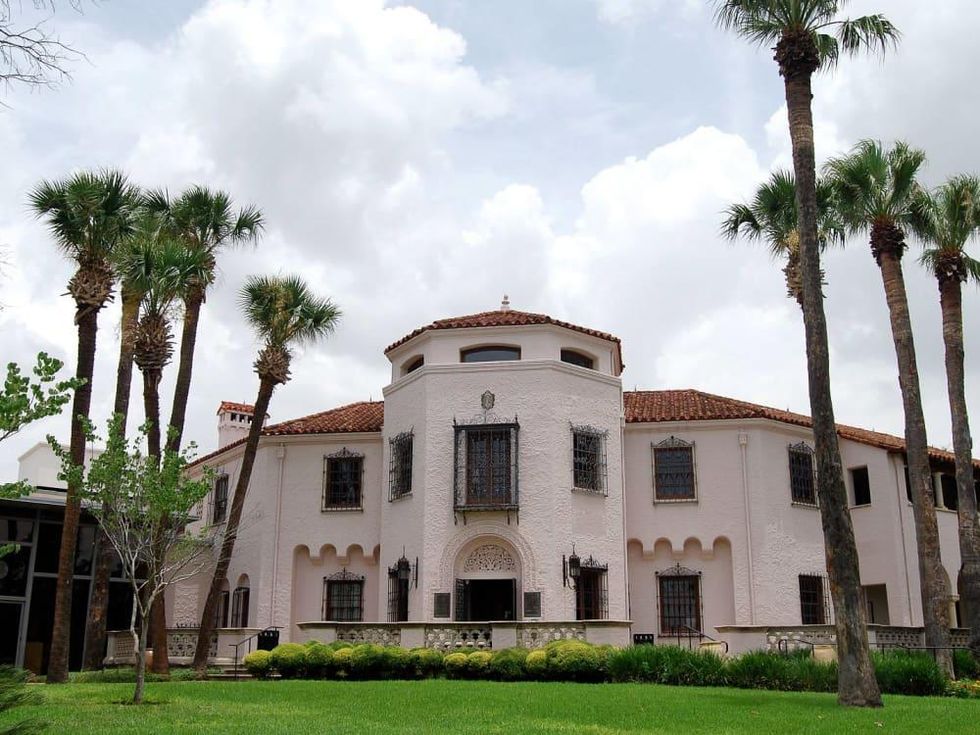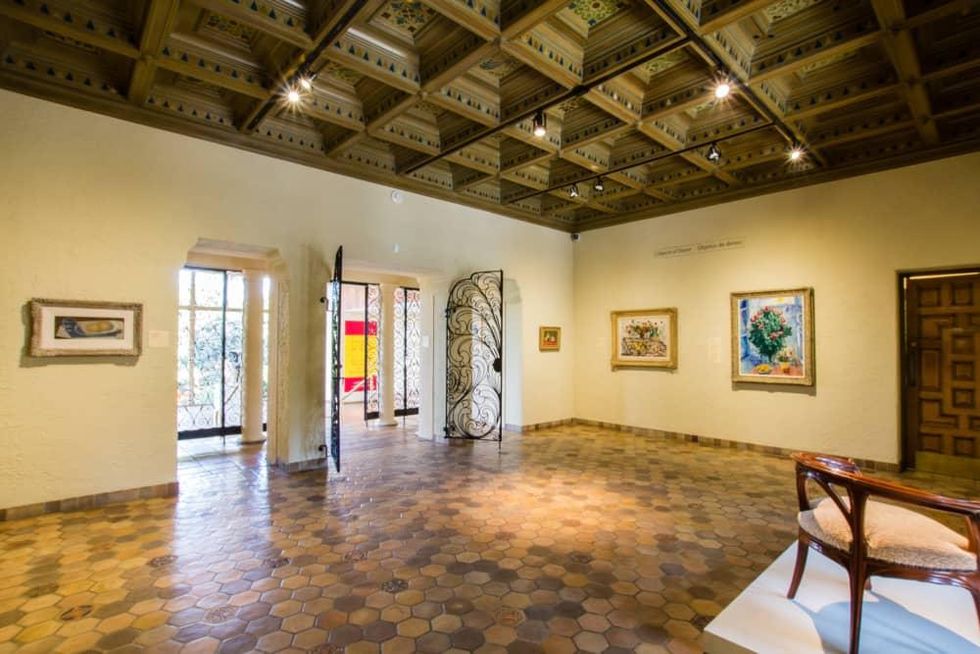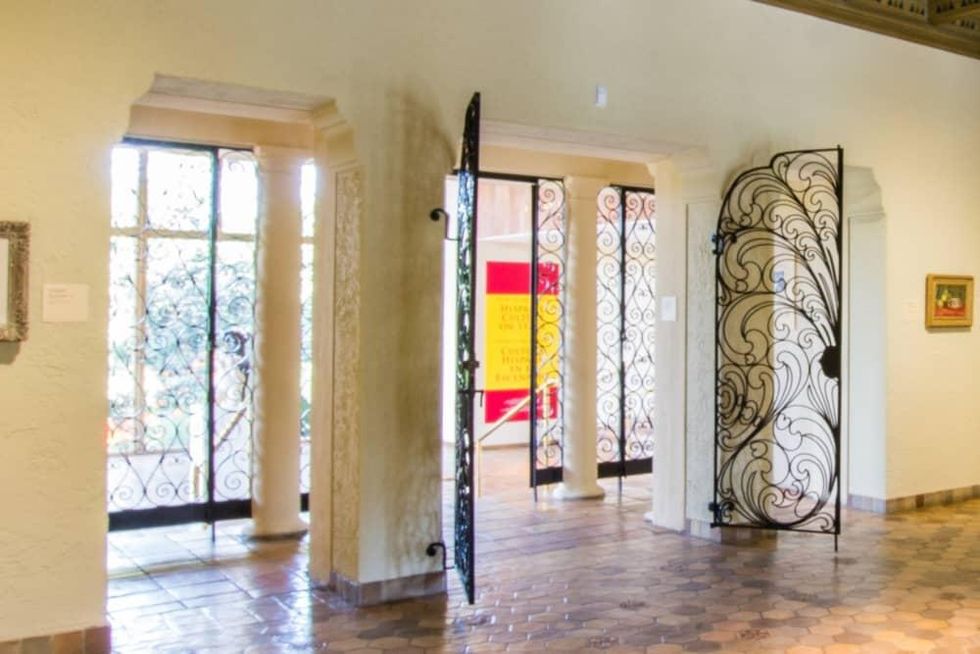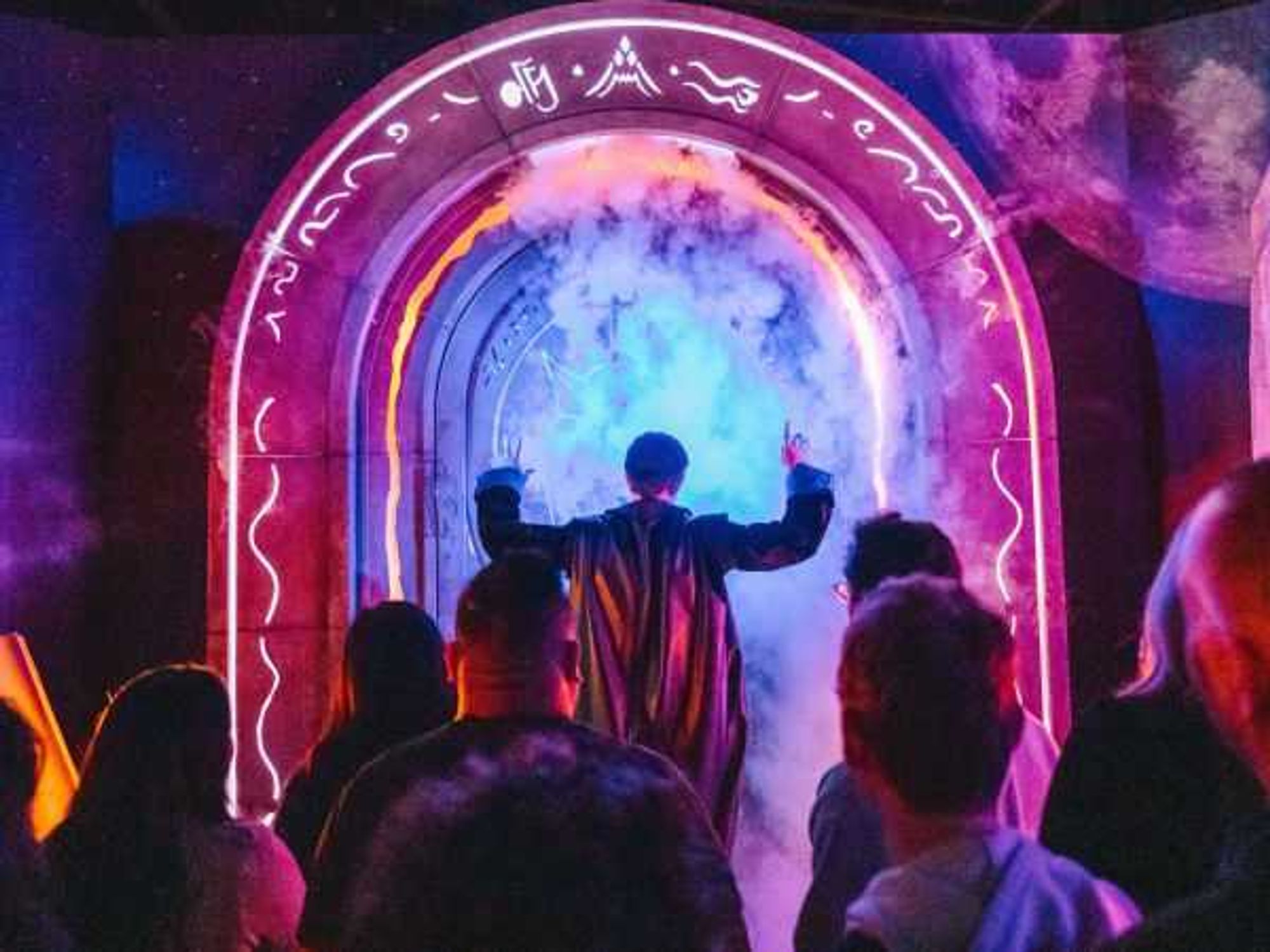Popping like a Peacock
McNay museum's beautiful peacock gates open doors to San Antonio's past
Peacocks draw attention by raising their feathers, but you may not even notice the gates depicting the gorgeous artistic renderings of the birds during your next visit to the McNay Art Museum. But this hidden gem come with a rich history.
Located on the swirling, wrought-iron gates that swing up to provide access to a Mexican tile display in the courtyard, these incredible displays of the decorative arts were likely approved by museum founder Marion Koogler McNay. Peacocks once preened and strutted on the grounds of the 23-acre estate, where McNay lived with the art collection that she would one day leave behind to establish Texas’ first museum of modern art.
The McNay opened its doors in 1954, but in preceding decades, the noisy birds once acted almost as guard dogs.
“Have you ever heard the sounds peacocks make when they raise their feathers?” asks Kate Carey, head of education, at the McNay. “It’s sort of a screech.”
She explains that they actually served as a type of feathered alarm system to scare away intruders after the Spanish Colonial Revival-style home was built in 1927 — long before its perch on the corner of North New Braunfels Avenue became part of an established neighborhood.
A wrought-iron wonder
McNay herself was involved with every detail of designing the estate, and would have overseen the peacock designs incorporated throughout.
For instance, McNay would have approved the design for the impressive interior gates that showcase whorls of iron to represent peacock feathers. “She was really specific about everything decorative about the home, from the patterning on the ceiling to the tiles on the floors,” says Carey. “It stands to reason that she selected those.”
Today, the gates stand flung open so visitors can pass from the former dining room into the light-filled space that’s now the Brown Gallery. Carey says it’s an appropriate entrance into the space because the showy peacock gates currently lead to a collection of art glass from the Art Nouveau era, a time when wildlife displays like the wolves, nocturnal animals, and peacocks became popular motifs in architectural design and décor.
In fact, florid peacock gates abounded in French design, European hotels, and other estates during the effusive Art Nouveau period.
Courtyard of many colors
McNay also would have commissioned the courtyard’s Talavera tile mural featuring three peacocks, a popular design also displayed on a mug sold in the museum gift shop.
“It’s thought that Marion actually hired a Spanish painter to sketch the mural for her, and then had it produced by Uriarte Workshop,” Carey says, noting that the respected Mexican tile workshop was known for such ornate displays.
Visitors can see other peacocks perched here and there around the museum, such as on wooden tiles in the coffered ceiling or in a new entry hall chandelier commissioned in 2001 that features animals including the peacock.
The peacock has such as presence at the McNay that docents and volunteers have started to adopt it as an emblem, using the peacock image from a 1911 print in the McNay collection as a source.
Marion Koogler McNay was proud of the home she lived in as well as the 700 works of 20th-century art she amassed.
She was proud, you might say, as a peacock.




 The Dallas Cowboys Cheerleaders high-kicked their way into San Antonio in May. Dallas Cowboys Facebook
The Dallas Cowboys Cheerleaders high-kicked their way into San Antonio in May. Dallas Cowboys Facebook